In This Moment
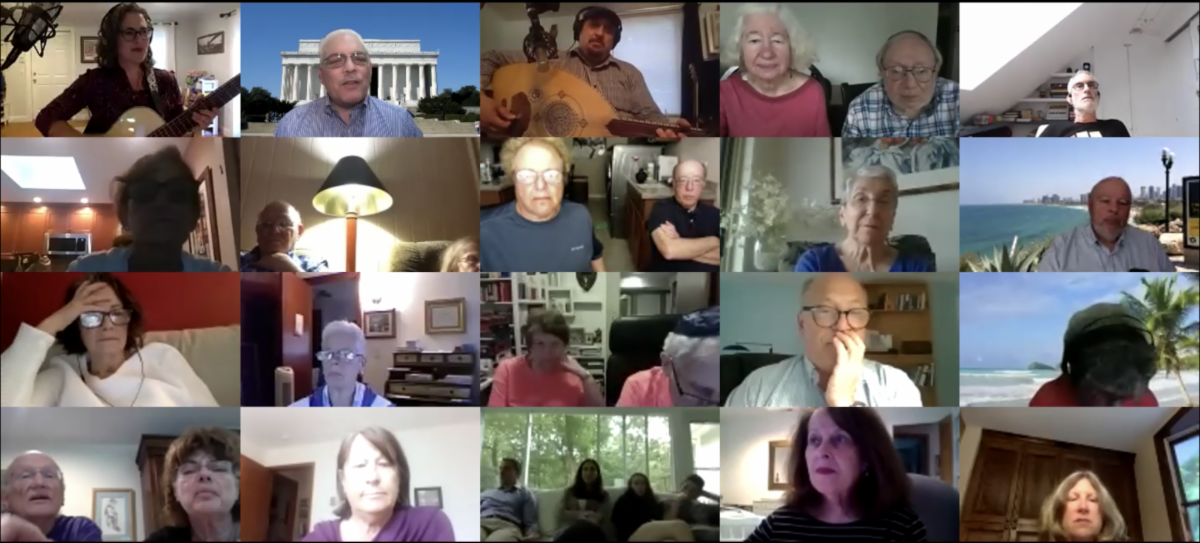

Snippets from last Friday night's service - watch it here
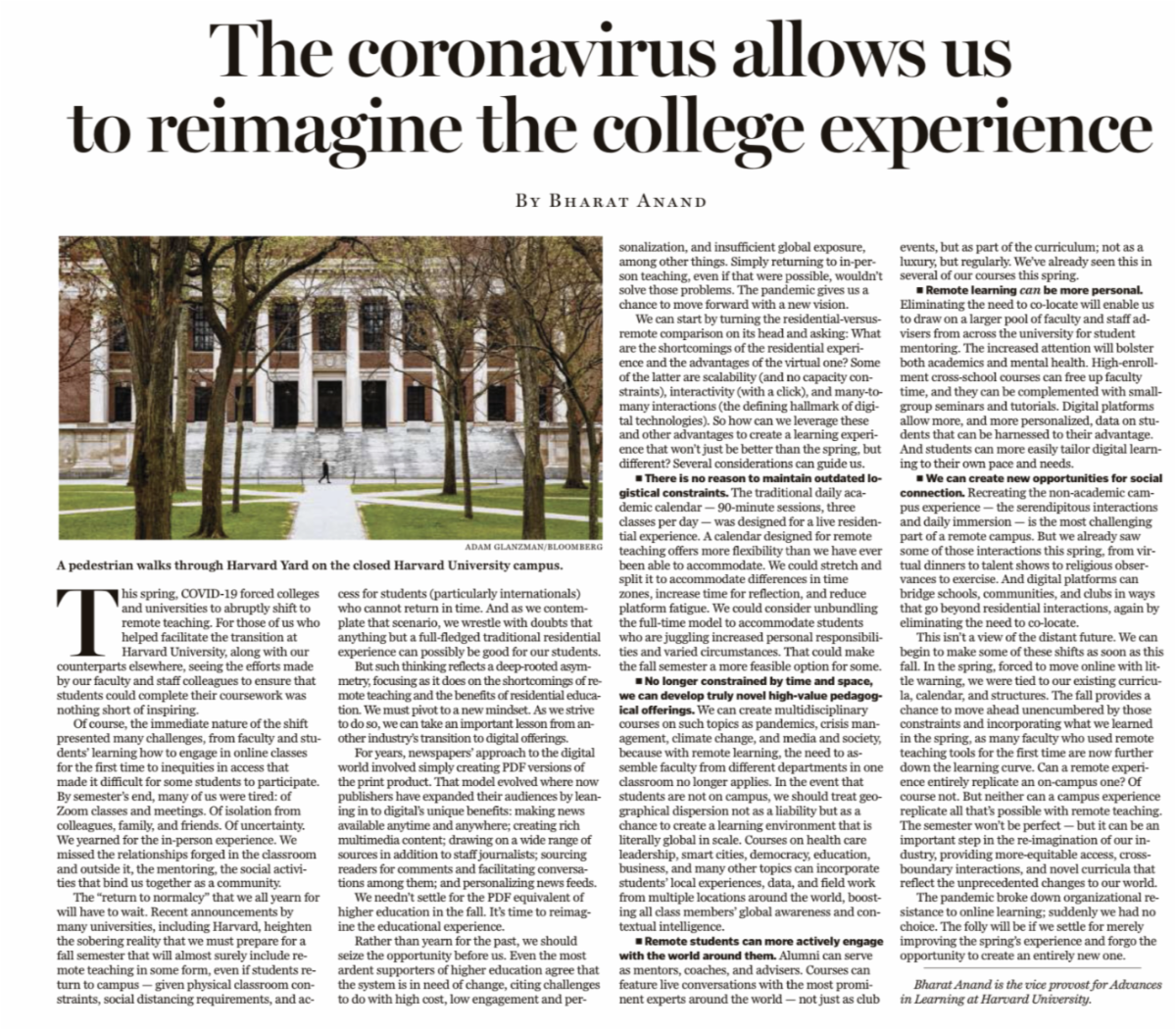
This article suggests that given the new realities of the pandemic, we need to reimagine the college experience for the coming fall, and that in some ways the virtual can be superior to the physical. The same is true for houses of worship. The New York Times surveyed 511 epidemiologists, and of all the activities suggested, returning to houses of worship was near the bottom of the list, and for good reason.

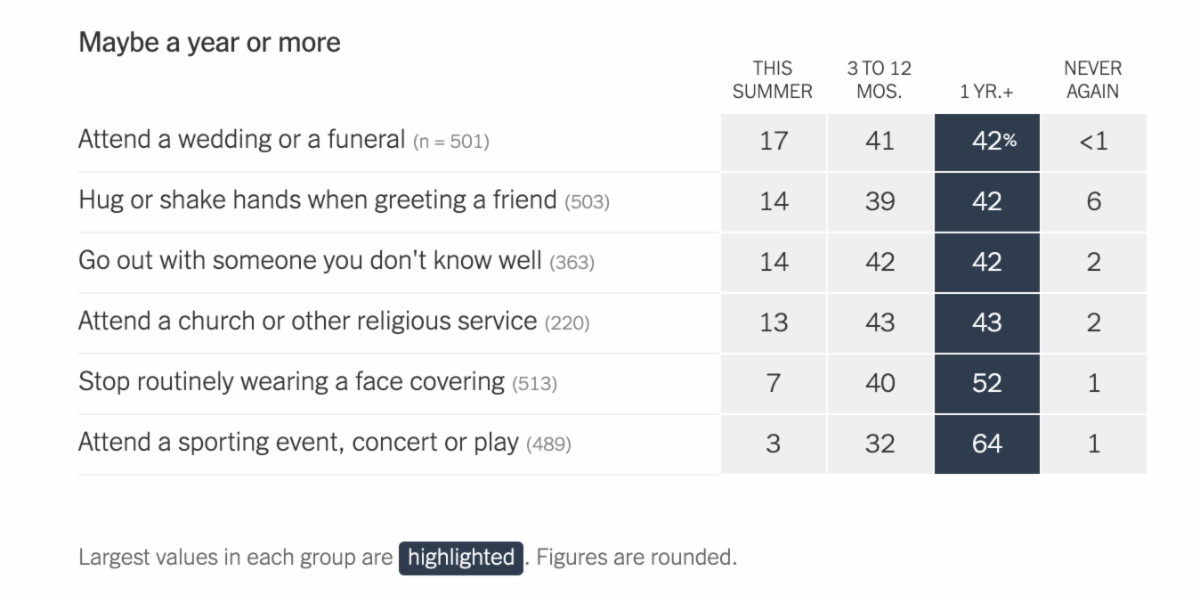
So if the public health pros are saying go slow with reopening, who are we to argue?
As we consider our options, the prime Jewish value that guides our thinking is - and must be - to protect the health and safety of our congregants. WIth that in mind, we need to continue to find new ways to comfort, challenge and inspire, ways that take us through the summer and beyond the holidays into the fall, for as long as it takes until it we can all be physically together. And that is precisely what we are working on.
We'll have lots of time to discuss the holidays, but for now, here's a quick peak inside our planning: First, you’ll be happy to note that Rosh Hashanah will still take place on Rosh Hashanah, and Yom Kippur on Yom Kippur. Though the time frame of the services will be consistent with past experience, we’ll be packaging the event into more palatable segments, with a good deal of it being prepared remotely and in advance. That will allow us to have choral singing and inspiring music (which distancing rules would not allow us to do on-site), and you’ll just have to wait to see how we do it. All I can say is that it will be different - and fantastic. The service will be professionally produced (unlike our current Zoom services) to maximize the experience for everyone.
With our Torah readers chanting remotely, we can expand the roster of readers to include people have moved away, including college students and other young adults who have read here on the holidays over the years. So please get the word out to our alumni to let me know if they are interested in "coming back" - virtually - to read.
We would also love to involve more families in doing English readings, which can be taped in advance from home. Some congregants might also want to share experiences from the past difficult months. We'll be asking each family who wants to send video Rosh Hashanah greetings, which we will incorporate into the services, along with photos - and for Yizkor on Yom Kippur, our virtual "Book of Remembrance" will include photos of our departed.
But with all that, so much of our service will be comfortingly familiar. And yes, there will be sermons.
We've only just begun to imagine the TBE Experience.
Look Who's Paying for our Praying
I'm of two minds about today's New York Times op-ed, "The Quiet Demise of the Separation of Church and State."
On the one hand, I've always been a rock-solid proponent of the separation of church and state, a brilliant Constitutional innovation that is the prime reason why America has been the most successful diaspora experience in the 3,000 year history of the Jewish people. There have been other contenders for that title, in particular the 500 years of Jewish life in Spain leading to the 1492 expulsion, the first few centuries of which have been called "The Golden Age." But it did not end well - the world "expulsion" sort of gives away the ending - so that disqualifies Spain as the Best. Diaspora. Ever.
On the other hand, the largesse of the US Government this spring, in the form of loans to non-profits that did not exclude places of worship, is now paying my salary. To be more specific, the money we received is enabling the temple to stay afloat without laying off staff. I know that I would not have been among those laid off, which would make me incredibly selfish to pooh pooh the PPP. The article, written by law professors Nelson Tebbe, Micah Schwartzman and Richard Schragger, lays out the benefits to the Jewish community and others in stark specificity:
The Paycheck Protection Program violates the constitutional rule requiring the separation of church and state, and it does so on an enormous scale. Nine thousand Catholic parishes have received loans so far. The Archdiocese of Louisville, for example, was awarded more than $20 million across 84 entities, for an average of $238,000 each. One church, St. James parish and school in Elizabethtown, Ky., received loans totaling $439,800.
Moreover, a national survey found that 40 percent of all Protestant churches had applied for government funds and that 59 percent of those applications were approved. The Jewish Federations of North America reported in late April that 575 organizations had received loans, with a median of $250,000 each and a total of $312 million. Recipients included more than 200 synagogues. With 445 entities awaiting word on their applications, the J.F.N.A. estimated that Jewish nonprofits could receive $500 million from the program.
This is no small thing. One wonders how it was determined who got what (and what that church in Kentucky did to merit $439,000), but these loans and grants have been lifesavers to the non-profit community, and I suspect that it won't be the last lifeline extended during this prolonged crisis. Imagine our world had there been no Cares Act.
But I am still troubled. The erosion of church/state separation has been happening for a long time, to the point where it has hardly been mentioned as this money has been handed out. One wonders where this is just softening us up for what could be real shock to that precious wall of separation when the Supreme Court addresses abortion over the coming days.
For Jews, reproductive freedom is also religious freedom. The Rabbinical Assembly stated in a recent resolution:
Denying a woman and her family full access to the complete spectrum of reproductive healthcare, including contraception, abortion-inducing devices, and abortions, among others, on religious grounds, deprives women of their Constitutional right to religious freedom.
Abortion is framed as a religious issue by its opponents, and so it is. Many Christians believe that human life begins at conception but rabbinic Judaism expressly does not. Therefore, it is not murder.
It's not just about abortion rights, of course, but of the fear that a zealous majority will impose its religious views on minority faiths by claiming that its beliefs supersede all others, and there is legitimate fear that the American judiciary is headed in that direction.
The separation of church and state has enabled the American experiment to succeed, not just for Jews, but for everyone. OK, not everyone, if you happen to have darker pigmentation, as these past couple of weeks have driven home. But theoretically, for everyone. Jews have faced our share of anti-Semitism here, as we've seen especially since 2016. But it has never been endemic to the culture, as it was in places where one religion was legally dominant. In the pluralistic, free marketplace of American religion, Judaism has flourished as never before. In some ways, we are freer to practice our faith here even than in Israel (try having a progressive service at the Western Wall).
That Wall of Separation is all that separates us from being Spain...and Poland and Germany, England, France, Babylon, Egypt, and all the other places Jews once called home, from where we were ultimately expelled. (Since you are so curious, I've listed them at the bottom of this email).
So you can excuse me from being just a little uncomfortable with the fact that I am now being paid, even if indirectly, by the US Government. Whom do I work for? Uncle Sam? You? The Jewish people? Or God? I can handle some mix of the last three choices. But the first one makes me uncomfortable.
And you should be too.
Be safe, and enjoy this beautiful day!
Rabbi Joshua Hammerman
The following is a list of Jewish expulsions and events that prompted major streams of Jewish refugees.
- 733 BCE
- Samaria (Israel/Judah). King Tiglath-Pileser III deports Jews.[2]
- 722 BCE
- King Sargon II captures and deports Jews.[2] The Assyrians led by Shalmaneser conquered the (Northern) Kingdom of Israel and deports the population to Khorasan. Ten of the twelve Tribes of Israel are considered lost.
- 597 BCE
- The Babylonian captivity. In 537 BCE the Persians, who conquered Babylon two years earlier, allow Jews to return and rebuild Jerusalem and the Temple.[3]
- 139 BCE
- Expulsion from the city of Rome under the accusation of aggressive proselytizing among the Romans.[5]
- 19 CE
- Expulsion from the city of Rome by Emperor Tiberius together with practitioners of the Egyptian religion.[6][7]
- 41-53 CE
- Claudius' expulsion of Jews from Rome.
- 70 CE
- The defeat of the Great Jewish Revolt. Masses of Jews across the Roman Empire enslaved, while many others flee.[8]
- 119
- Large Jewish communities of Cyprus, Cyrene and Alexandria obliterated after the Jewish defeat in Kitos War against Rome. This event caused a major demographic shift in the Levant and North Africa. According to Eusebius of Caesarea the outbreak of violence left Libya depopulated to such an extent that a few years later new colonies had to be established there by the emperor Hadrian just to maintain the viability of continued settlement.[citation needed]
- 135/6
- The Romans suppressed the Bar Kokhba's revolt. Emperor Hadrian expelled hundreds of thousands Jews from Judea, wiped the name off maps, replaced it with Syria Palaestina, and forbade Jews to set foot in Jerusalem.[9]
- 415
- Jews expelled from Alexandria under the leadership of Saint Cyril of Alexandria.[10]
- 612
- Visigothic king Sisebut mandated that every Jew who would refuse for over a year to have himself or his children and servants baptized would be banished from the country and deprived of his possessions.[12]
- 629
- The entire Jewish population of Galilee massacred or expelled, following the Jewish rebellion against Byzantium.
- 7th century
- Muhammad expelled Jewish tribes Banu Qaynuqa and Banu Nadir from Medina, The Banu Qurayza tribe was slaughtered and the Jewish settlement of Khaybar was ransacked.
- 1012
- Jews expelled from Mainz.
- 1095 - mid-13th century
- The waves of Crusades destroyed hundreds of Jewish communities in Europe and in the Middle East, including Jerusalem.[9]
- Mid-12th century
- The invasion of Almohades brought to end the Golden age of Jewish culture in Spain. Among other refugees was Maimonides, who fled to Morocco, then Egypt, then Eretz Israel.
- 12th-14th centuries
- France. The practice of expelling the Jews accompanied by confiscation of their property, followed by temporary readmissions for ransom, was used to enrich the crown: expulsions from Paris by Philip Augustus in 1182, from France by Louis IX in 1254, by Philip IV in 1306, by Charles IV in 1322, by Charles V in 1359, by Charles VI in 1394.
- 13th century
- The influential philosopher and logician Ramon Llull (1232-1315) called for expulsion of all Jews who would refuse conversion to Christianity. Some scholars regard Llull's as the first comprehensive articulation, in the Christian West, of an expulsionist policy regarding Jews.
- 1290
- King Edward I of England issues the Edict of Expulsion for all Jews from England. The policy was reversed after 365 years in 1655 by Oliver Cromwell.
- 1293
- Destruction of most of the Jewish communities in the Kingdom of Naples.[15]
- 1360
- Jews expelled from Hungary by Louis I of Hungary.[16]
- 1392
- Jews expelled from Bern, Switzerland. Although between 1408 and 1427 Jews were again residing in the city, the only Jews to appear in Bern subsequently were transients, chiefly physicians and cattle dealers.[17]
- 1421
- Jews expelled from the Duchy of Austria at the behest of Albert II of Germany.[18][circular reference]
- 1492
- Ferdinand II and Isabella I issued the Alhambra decree, General Edict on the Expulsion of the Jews from Spain (approx. 200,000), from Sicily (1493, approx. 37,000), from Portugal (1496) from Calabria Italy 1554.
- 1495
- Charles VIII of France occupies Kingdom of Naples, bringing new persecution against Jews, many of whom were refugees from Spain.[15]
- 1496
- Jews expelled from Portugal. Maximilian I, Holy Roman Emperor, issues a decree expelling all Jews from Styria and Wiener Neustadt.
- 1510
- Jews expelled from Naples.[15]
- 1519
- Jews expelled from Regensburg.[13]
- 1526
- Jews expelled from Pressburg (Bratislava) in the wake of the defeat of the Kingdom of Hungary by the Ottoman Empire.[19]
- 1551
- All remaining Jews expelled from the duchy of Bavaria. Jewish settlement in Bavaria ceased until toward the end of the 17th century, when a small community was founded in Sulzbach by refugees from Vienna.[13]
- 1569
- Pope Pius V expels Jews from the papal states, except for Ancona and Rome.[15]
- 1593
- Pope Clement VIII expels Jews living in all the papal states, except Rome, Avignon and Ancona. Jews are invited to settle in Leghorn, the main port of Tuscany, where they are granted full religious liberty and civil rights, by the Medici family, who want to develop the region into a center of commerce.[13]
- 1614
- Fettmilch Uprising: Jews are expelled from Frankfurt, Holy Roman Empire, following the plundering of the Judengasse.
- 1654
- The fall of the Dutch colony of Recife in Brazil to the Portuguese prompted the Jewish arrival in New Amsterdam, the first group of Jews to flee to North America.
- 1669-1670
- Jews expelled from Vienna by Leopold I, Holy Roman Emperor and subsequently forbidden to settle in the Austrian Hereditary Lands. The former Jewish ghetto on the Unterer Werd was renamed Leopoldstadt in honour of the emperor and the expropriated houses and land given to Catholic citizens.[20]
- 1683
- Jews expelled from Haiti and all of the other French colonies, due to the Code Noir decree issued by Louis XIV.[21]
- 1701-1714
- War of the Spanish Succession. After the war, Jews of Austrian origin were expelled from Bavaria, but some were able to acquire the right to reside in Munich.[13]
- 1744-1790s
- The reforms of Frederick II, Joseph II and Maria Theresa sent masses of impoverished German and Austrian Jews east. See also: Schutzjude.[citation needed]
- 1791
- The tzarina of Russia Catherine the Great institutes the Pale of Settlement, restricting Jews to the western parts of the empire by means of deportation. By the late 19th century, over four million Jews would live in the Pale.
- 1862 Tennessee, Mississippi, Kentucky
- Jews expelled by Ulysses S. Grant by General Order No. 11.[22]
- 1880-1910s
- Pogroms in the Russian Empire: around 2.5 million Jews emigrated from eastern Europe, mostly to the United States.[23]
- 1933-1957
- The Nazi German persecution started with the Nazi boycott of Jewish businesses in 1933, reached a first climax during Kristallnacht in 1938 and culminated in the Holocaust of European Jewry. The British Mandate of Palestine prohibited Jewish emigration to Mandatory Palestine. The 1938 Evian Conference, the 1943 Bermuda Conference and other attempts failed to resolve the problem of Jewish refugees, a fact widely used in Nazi propaganda (see also MS St. Louis). A small number of German and Austrian Jewish refugees from Nazism emigrated to Britain, where attitudes were not necessarily positive.[24] Many of the refugees fought for Britain in the Second World War. After WW-II, eastern European Holocaust survivors migrated to the allied-controlled part of Europe, as the Jewish society to which most of them belonged did not exist anymore. Often they were lone survivors consumed by the often futile search for other family and friends, and often unwelcome in the towns from which they came. They were known as displaced persons (also known as Sh'erit ha-Pletah) and placed in displaced persons camps, most of which were by 1951 closed. The last camp Föhrenwald was closed in 1957.
- 1947-1972
- The Jewish exodus from Arab and Muslim countries, in which the combined population of Jewish communities of the Middle East and North Africa (excluding Israel) was reduced from about 900,000 in 1948 to under 8,000 today, and approximately 600,000 of whom became citizens of Israel. The history of the exodus is politicized, given its proposed relevance to a final settlement Israeli-Palestinian peace negotiations.[25][26][27][28][29][30] When presenting the history, those who view the Jewish exodus as equivalent to the 1948 Palestinian exodus, such as the Israeli government and NGOs such as JJAC and JIMENA, emphasize "push factors", such as cases of anti-Jewish violence and forced expulsions,[25] and refer to those affected as "refugees".[25] Those who argue that the exodus does not equate to the Palestinian exodus emphasize "pull factors", such as the actions of local Jewish Agency for Israel officials aiming to fulfil the One Million Plan,[27] highlight good relations between the Jewish communities and their country's governments,[29] emphasize the impact of other push factors such as the decolonization in the Maghreb and the Suez War and Lavon Affair in Egypt,[29] and argue that many or all of those who left were not refugees.[25][27]
- Then UNHCR announced in February 1957 and in July 1967, that these Jews who had fled from Arab countries "may be considered prima facie within the mandate of this office," so according them in international law, as bona fide refugees.[citation needed]
- 1947
- Egypt passed the Companies' Law. This law required that no less than 75% of employees of companies in Egypt must be Egyptian citizens. This law strongly affected Jews, as only about 20% of all Jews in Egypt were Egyptian citizens. The rest, although in many cases born in Egypt and living there for generations, did not hold Egyptian citizenship.[31]
- 1948
- State of Israel established. Antisemitism in Egypt strongly intensified. On May 15, 1948, emergency law was declared, and a royal decree forbade Egyptian citizens to leave the country without a special permit. This was applied to Jews. Hundreds of Jews were arrested and many had their property confiscated. In June through August 1948, bombs were planted in Jewish neighborhoods and Jewish businesses looted. About 250 Jews were killed or wounded by the bombs. Roughly 14,000 Jews left Egypt between 1948-50.[31]
- 1949
- Jordan occupies and then annexes the West Bank - largely allotted by the 1947 UN Partition of Palestine to an Arab state, proposal rejected by the Arab leadership - and conducts large scale discrimination and persecution of all non-Muslim residents - Jewish, Christian (of many denominations), Druze, Circassian, etc. - and forces Arabisation of all public activity, including schools and public administration.[32]
- 1954
- Gamal Abdel Nasser seizes power in Egypt. Nasser immediately arrested many Jews who were tried on various charges, mainly for Zionist and communist activities. Jews were forced to donate large sums of money to the military. Strict supervision of Jewish enterprises was introduced; some were confiscated and others forcibly sold to the government.[31]
- 1956
- Suez Crisis. Roughly 3,000 Egyptian Jews were interned without charge in four detention camps. The government ordered thousands of Jews to leave the country within a few days, and they were not allowed to sell their property, nor to take any capital with them. The deportees were made to sign statements agreeing not to return to Egypt and transferring their property to the administration of the government. The International Red Cross helped about 8,000 stateless Jews to leave the country, taking most of them to Italy and Greece. Most of the Jews of Port Said (about 100) were smuggled to Israel by Israel agents. The system of deportation continued into 1957. Other Jews left voluntarily, after their livelihoods had been taken from them, until only 8,561 were registered in the 1957 census. The Jewish exodus continued until there were about 3,000 Jews left as of in 1967.[31]
- 1967
- Six-Day War. Hundreds of Egyptian Jews arrested, suffering beatings, torture, and abuse. Some were released following intervention by foreign states, especially by Spain, and were permitted to leave the country.[31] Libyan Jews, who numbered approximately 7,000, were subjected to pogroms in which 18 were killed, prompting a mass exodus that left fewer than 100 Jews in Libya.[33]
- 1970
- Less than 1,000 Jews still lived in Egypt in 1970. They were given permission to leave but without their possessions. As of 1971, only 400 Jews remained in Egypt. As of 2013, only a few dozen Jews remain in Egypt.[31]
- 1960s-1989
- Due to the 1968 Polish political crisis thousands of Jews were forced by the communist authorities to leave Poland. See also rootless cosmopolitan, Doctors' plot, Jackson-Vanik amendment, refusenik, Zionology, Pamyat.[citation needed]
- 1962
- Jews flee Algeria as result of OAS violence. The community feared that the proclamation of independence would precipitate a Muslim outburst. By the end of July 1962, 70,000 Jews had left for France and another 5,000 for Israel. It is estimated that some 80% of Algerian Jews settled in France.[34]
- 1965
- Situation of Jews in Algeria rapidly deteriorates. By 1969, fewer than 1,000 Jews remain. By the 1990s, the numbers had dwindled to approximately 70.[34]
- 1970s-1990s
- State-sponsored persecution in the Soviet Union prompted hundreds of thousands of Soviet Jews, known as Refuseniks because they had been denied official permission to leave, to flee; most went to Israel or to the United States as refugees.[35]
- 1991
- 14,000 Jews fled Ethiopia as part of Operation Solomon.

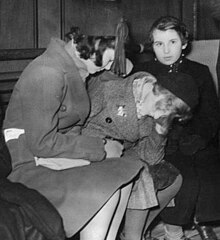
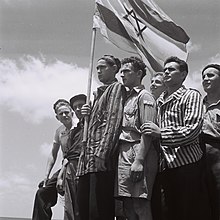
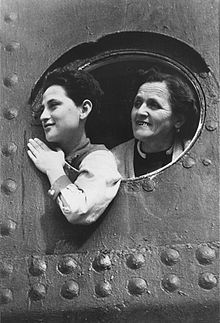
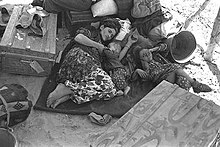


No comments:
Post a Comment